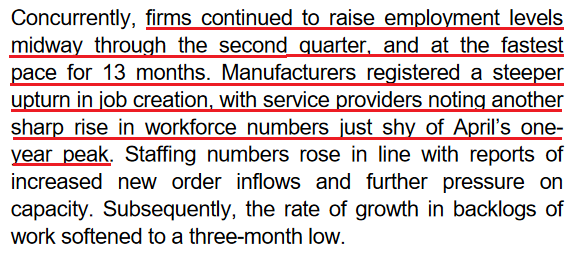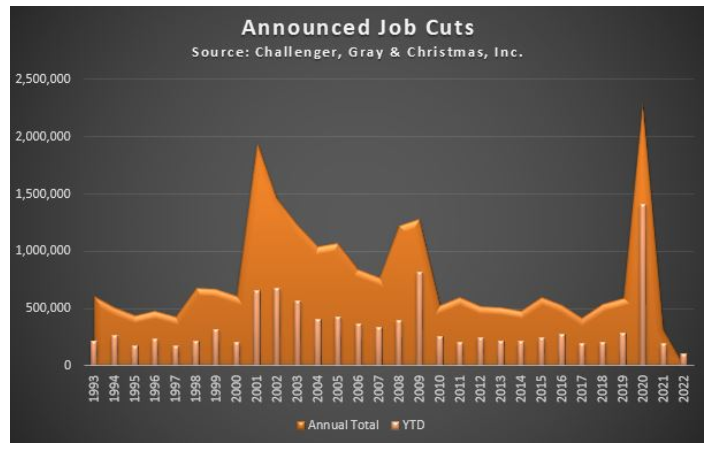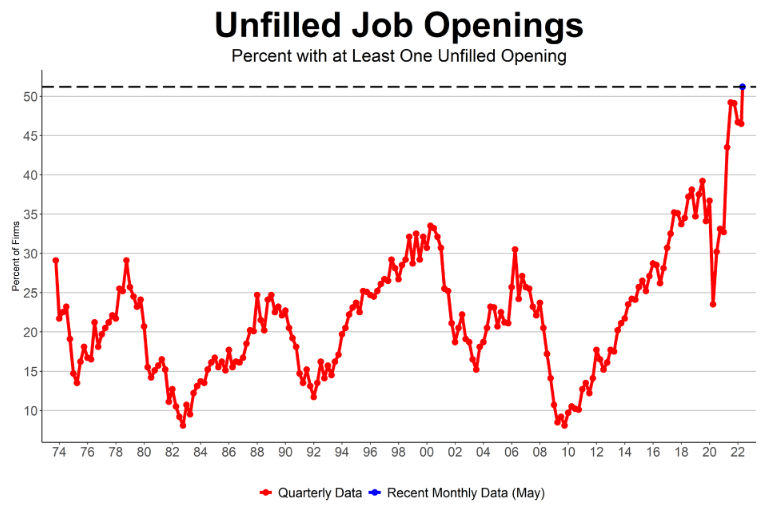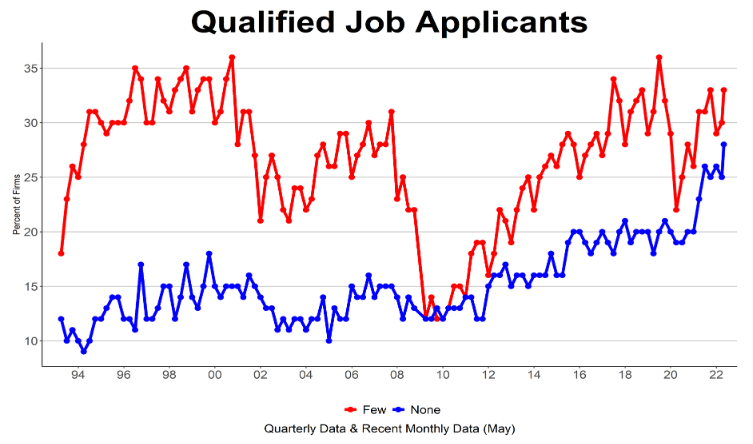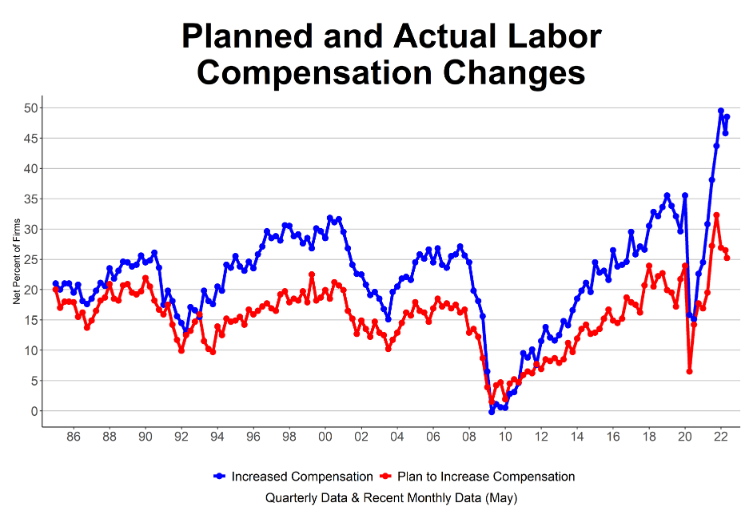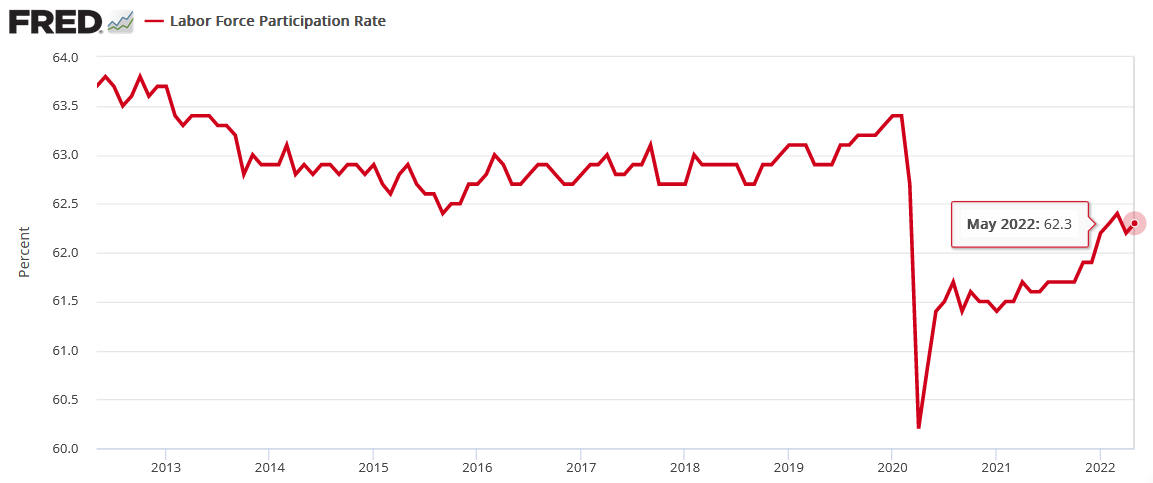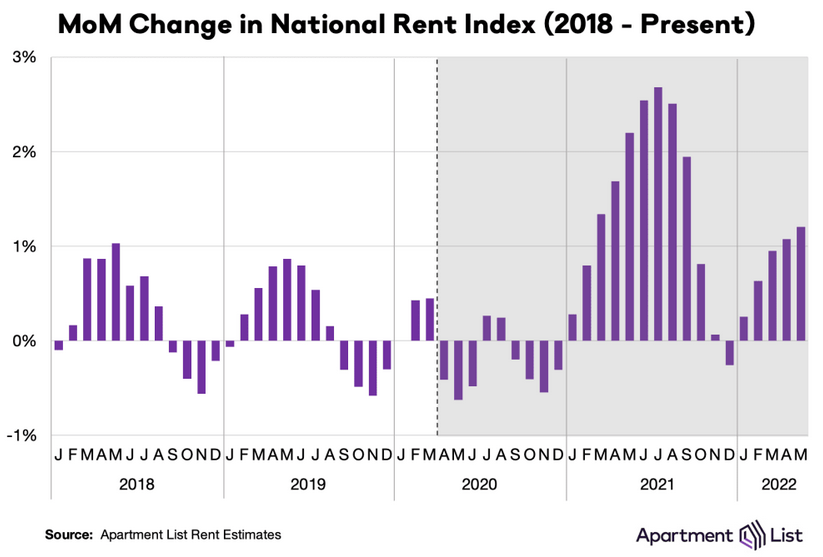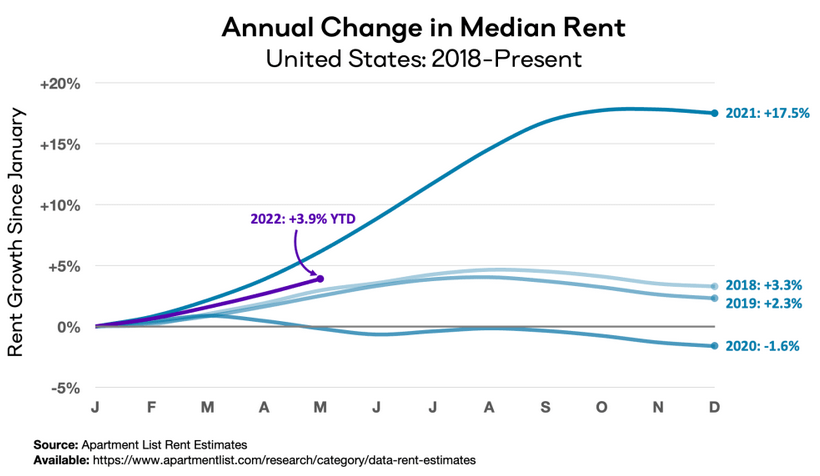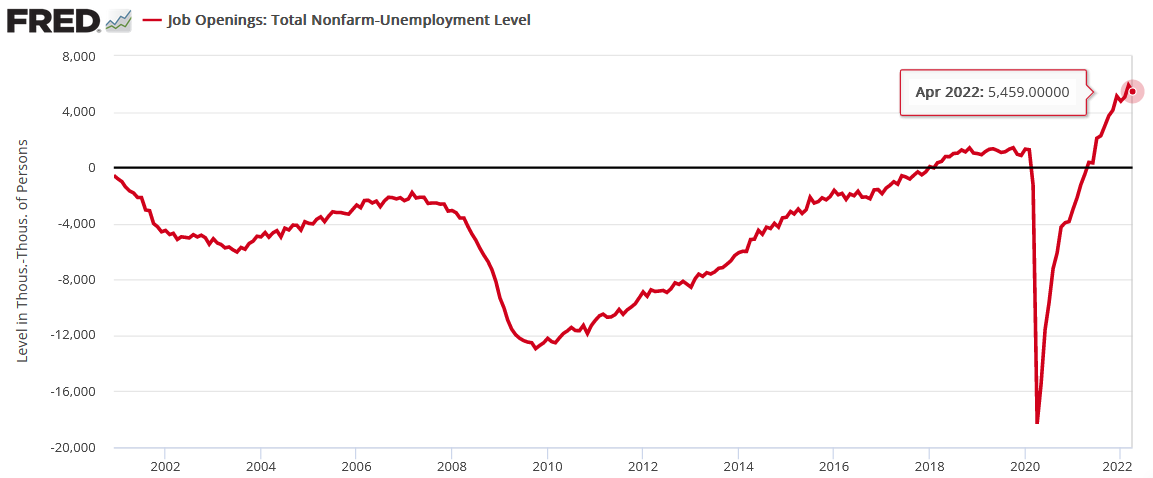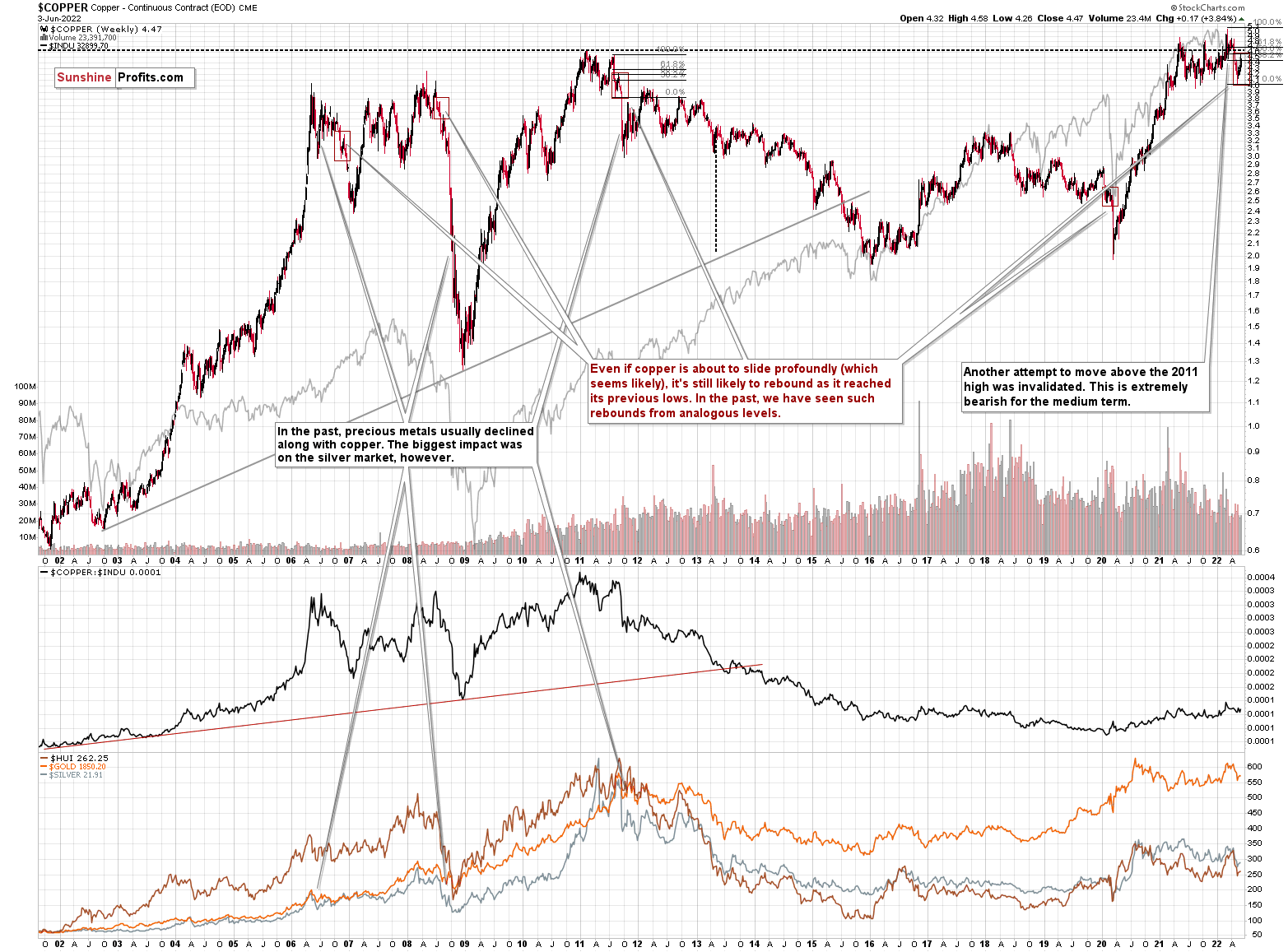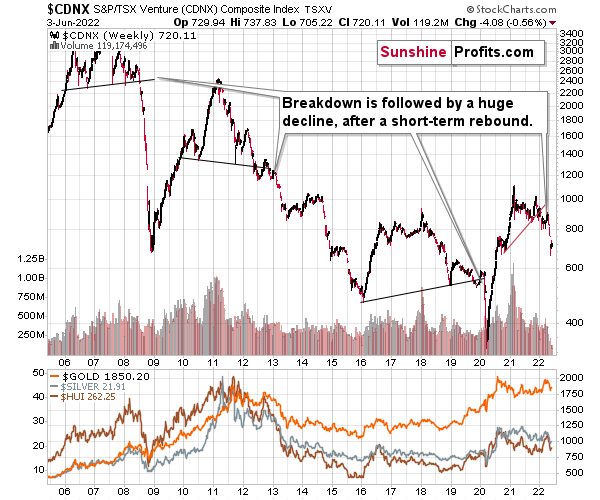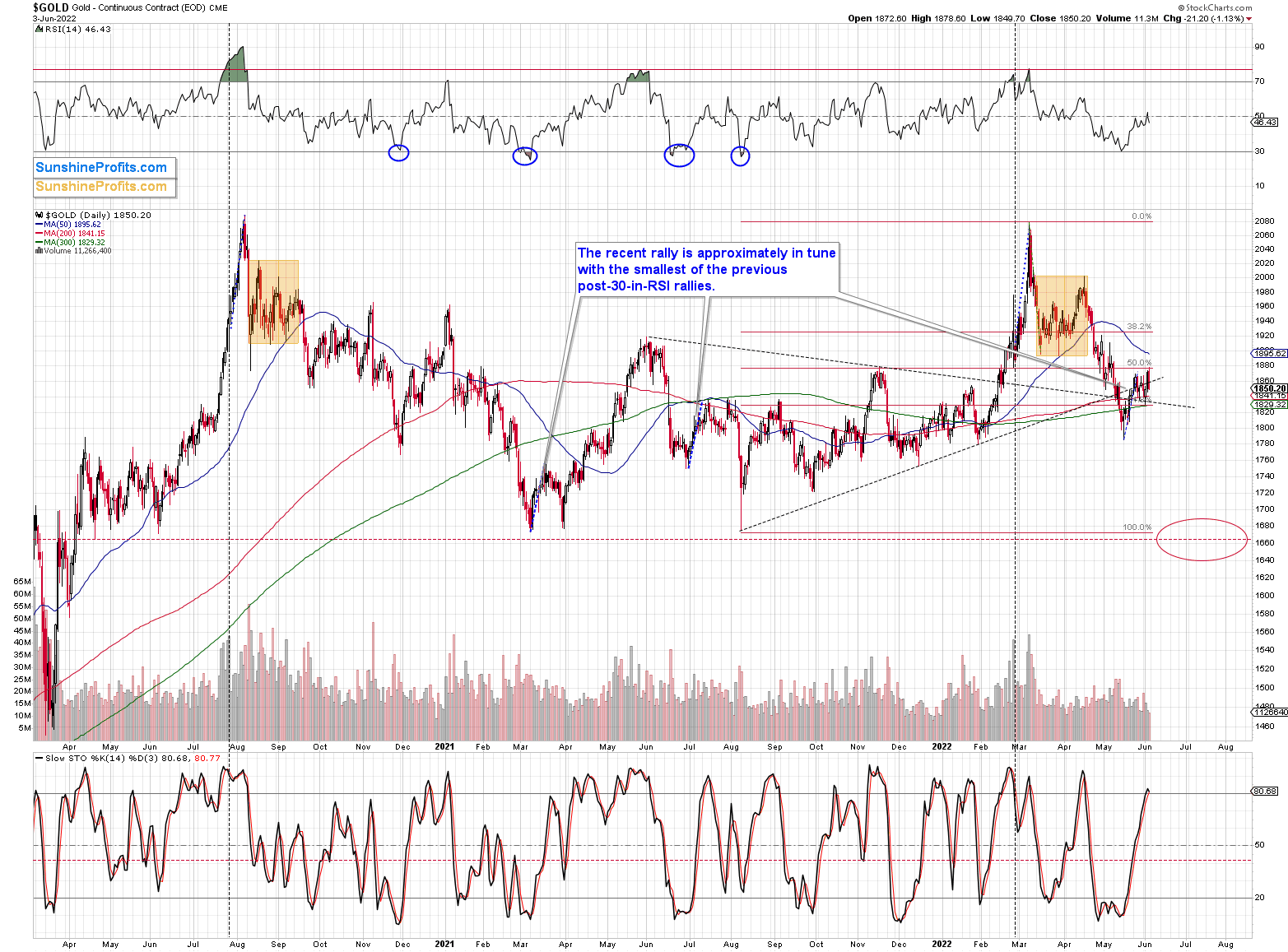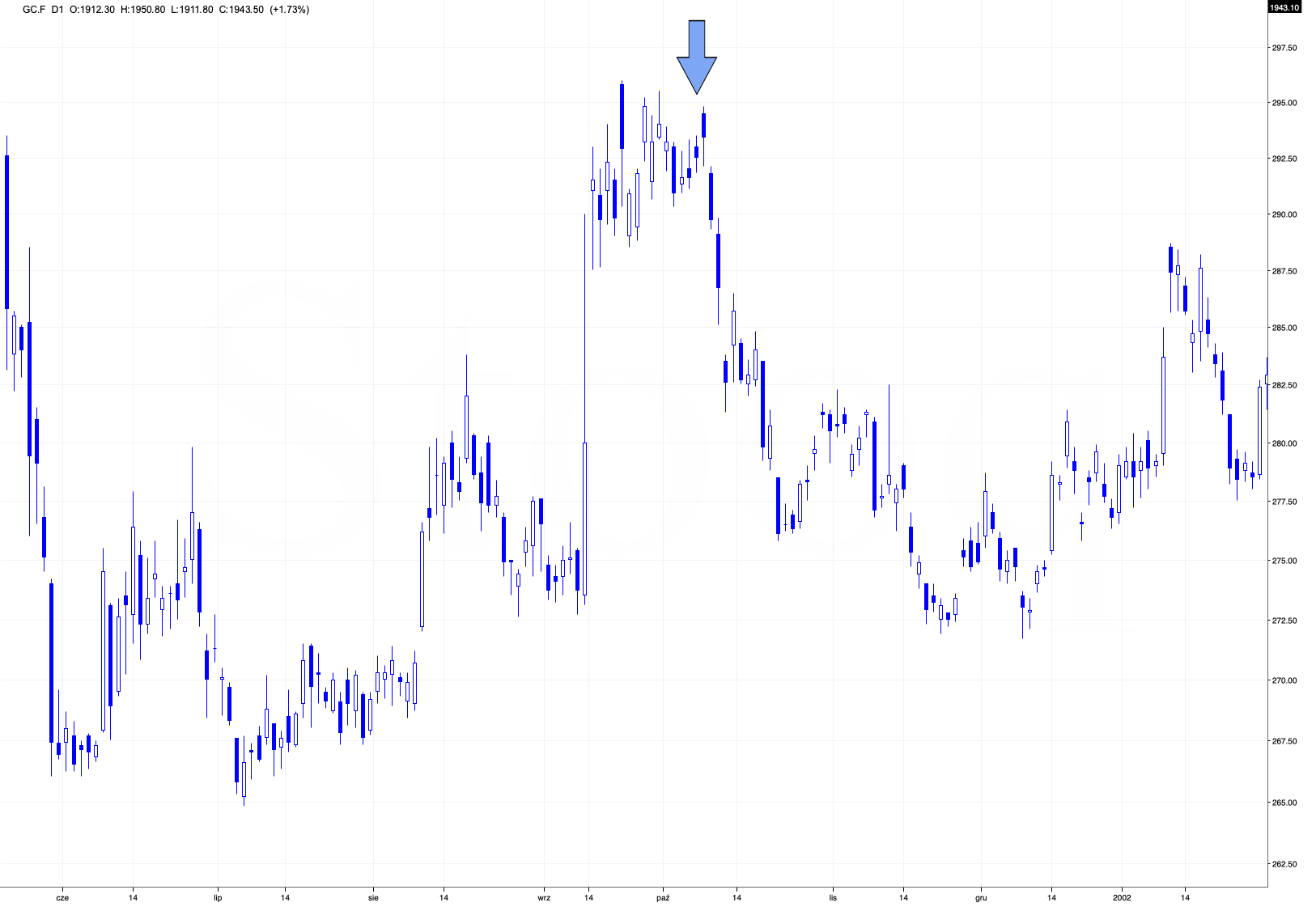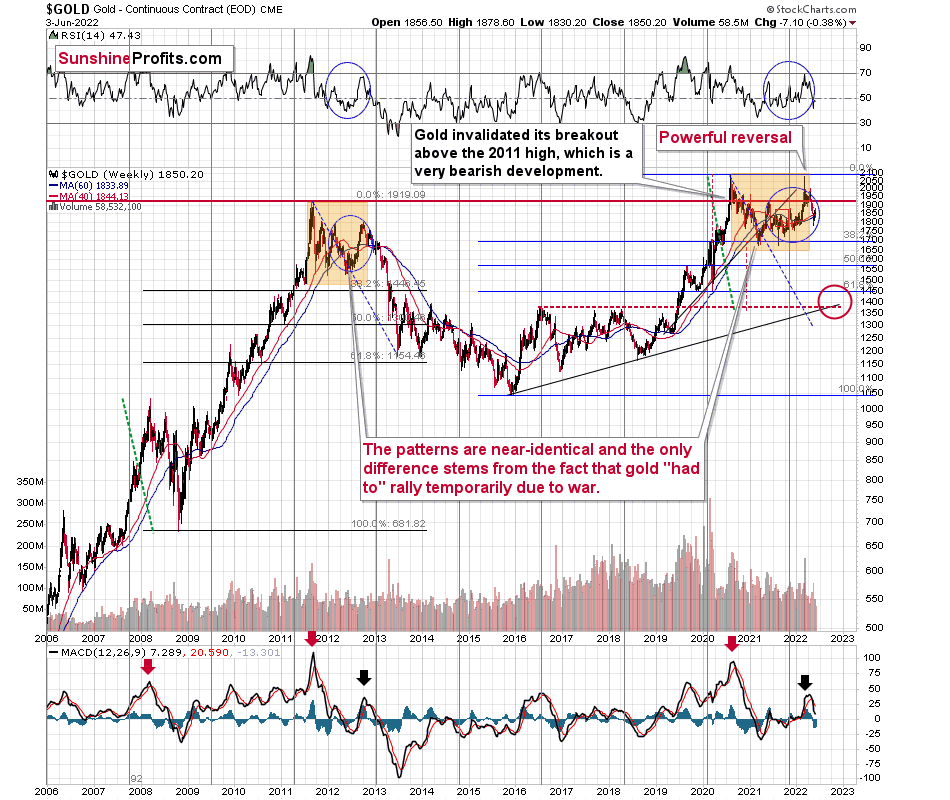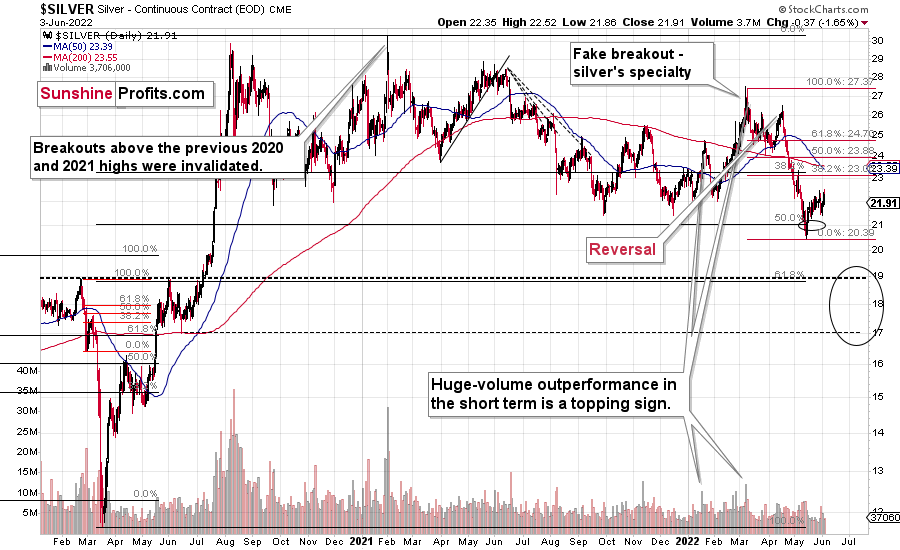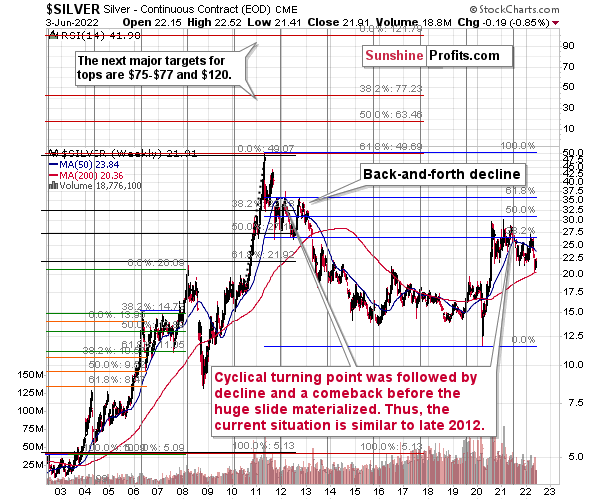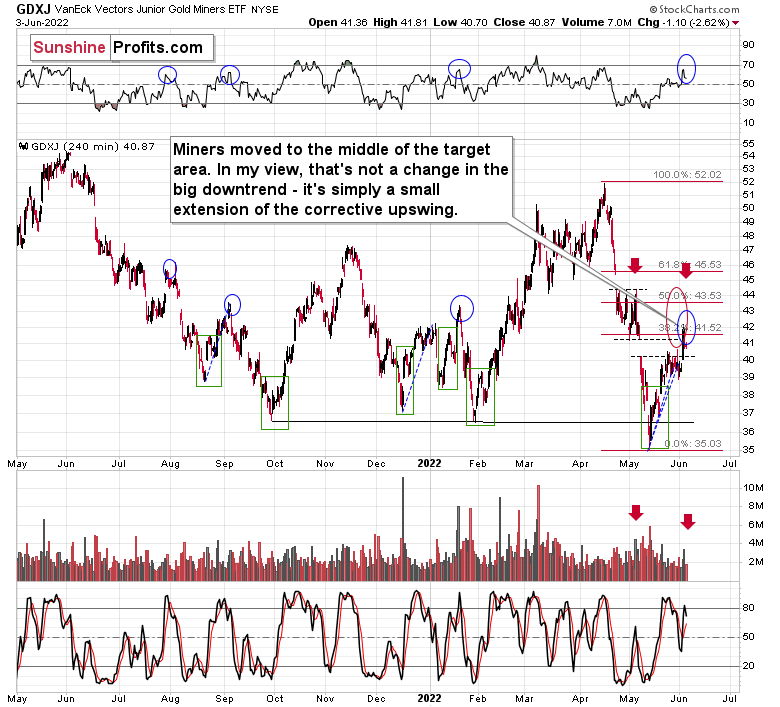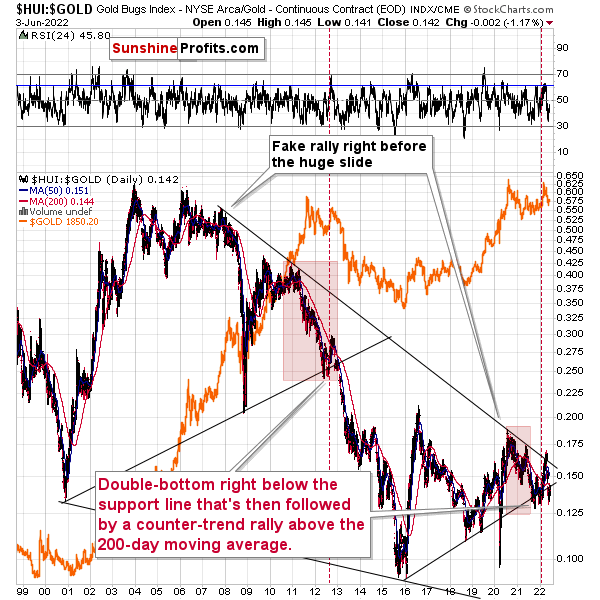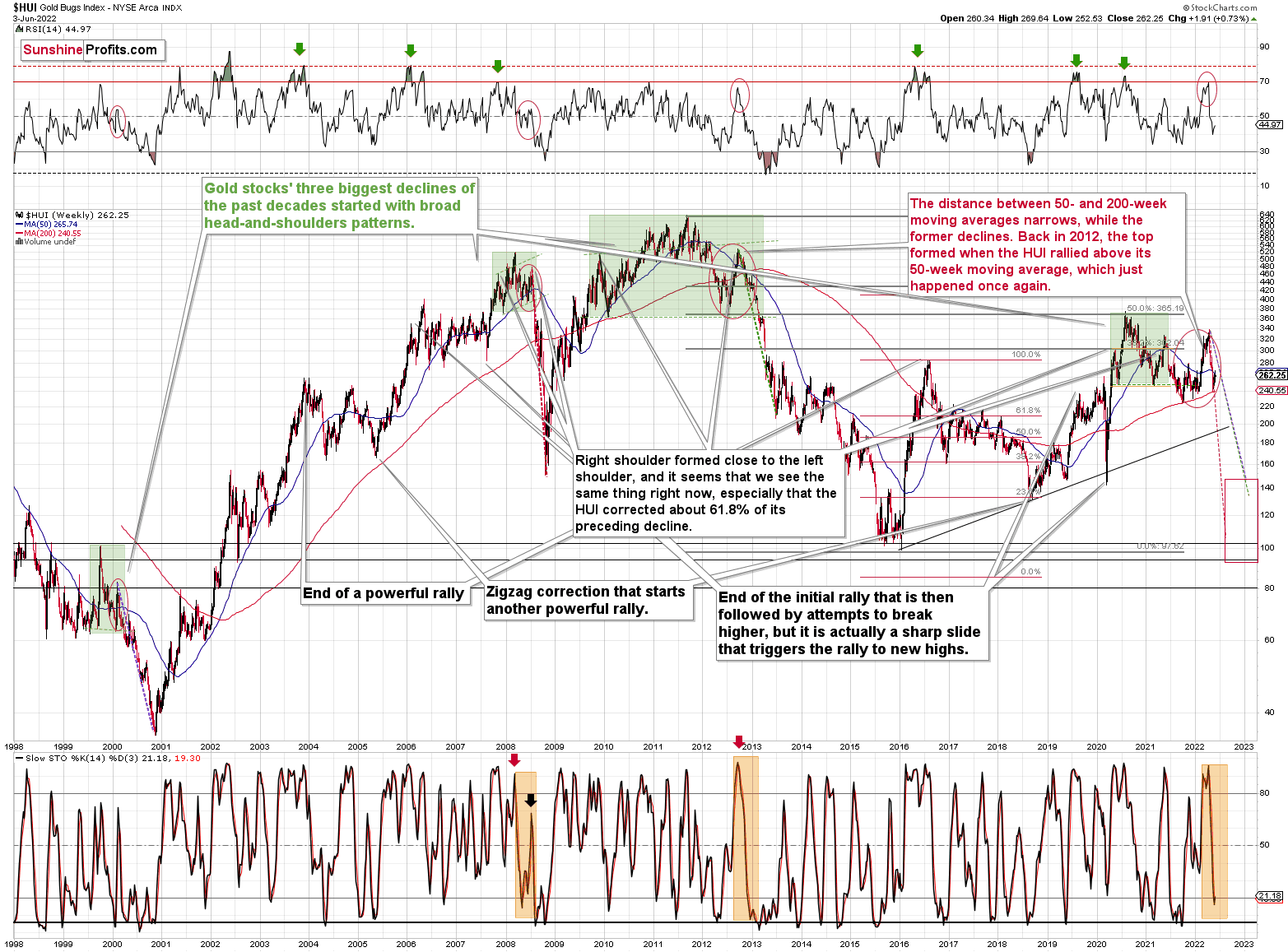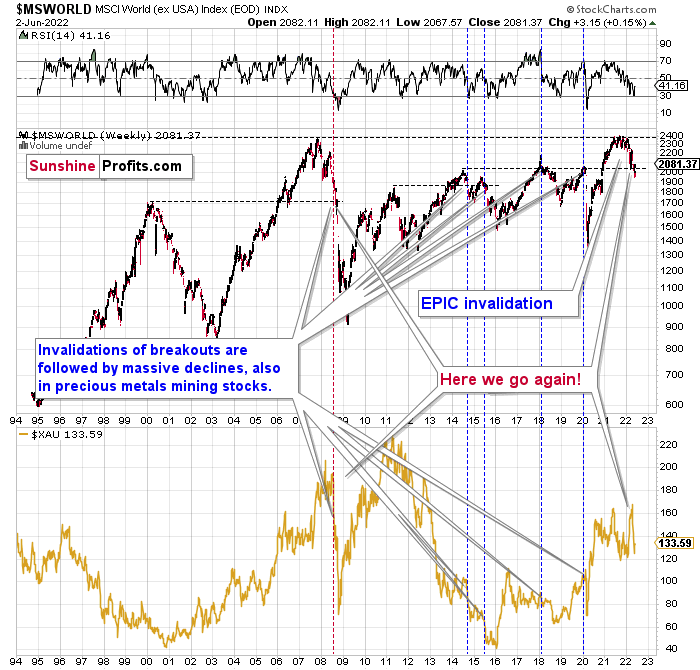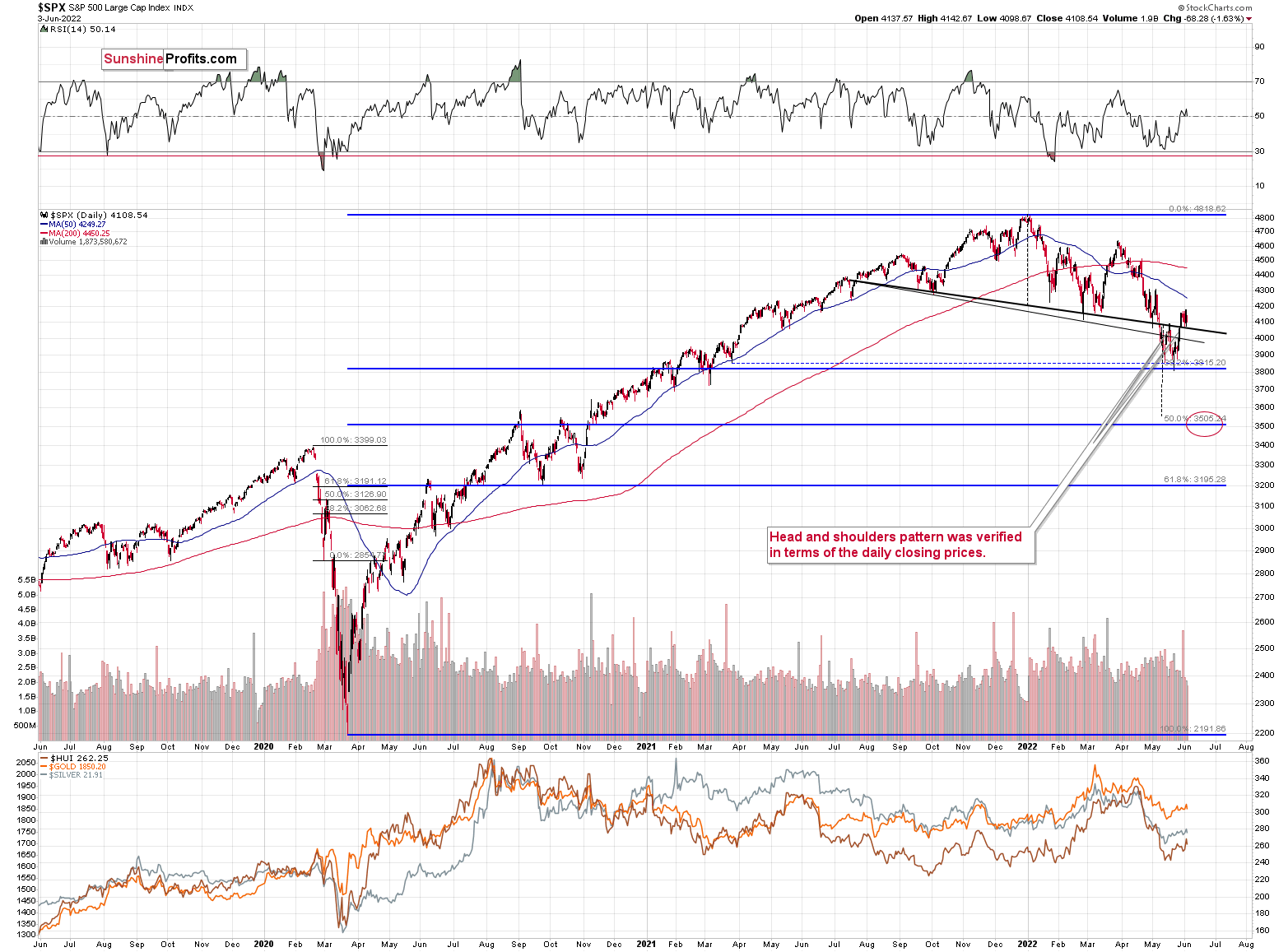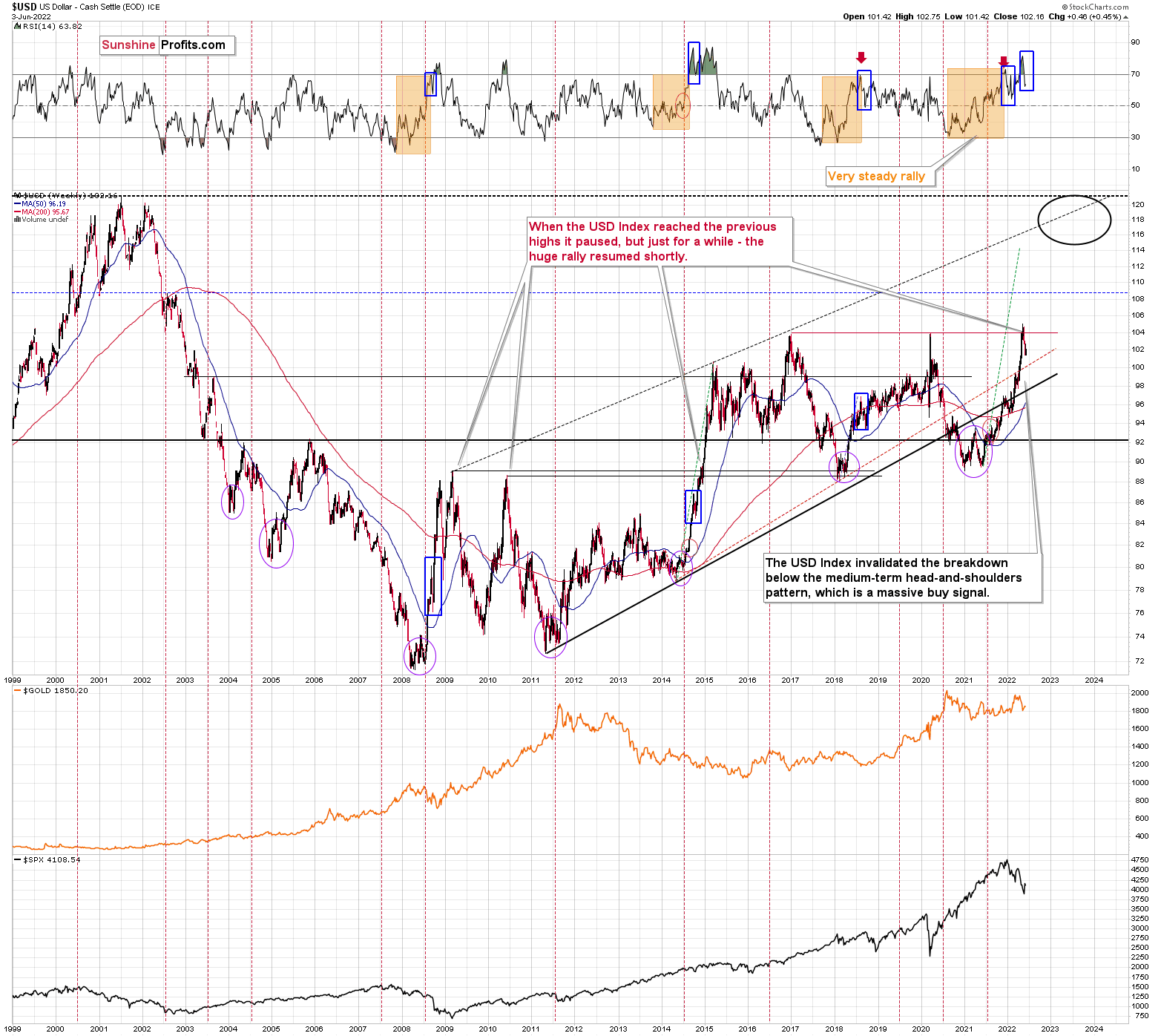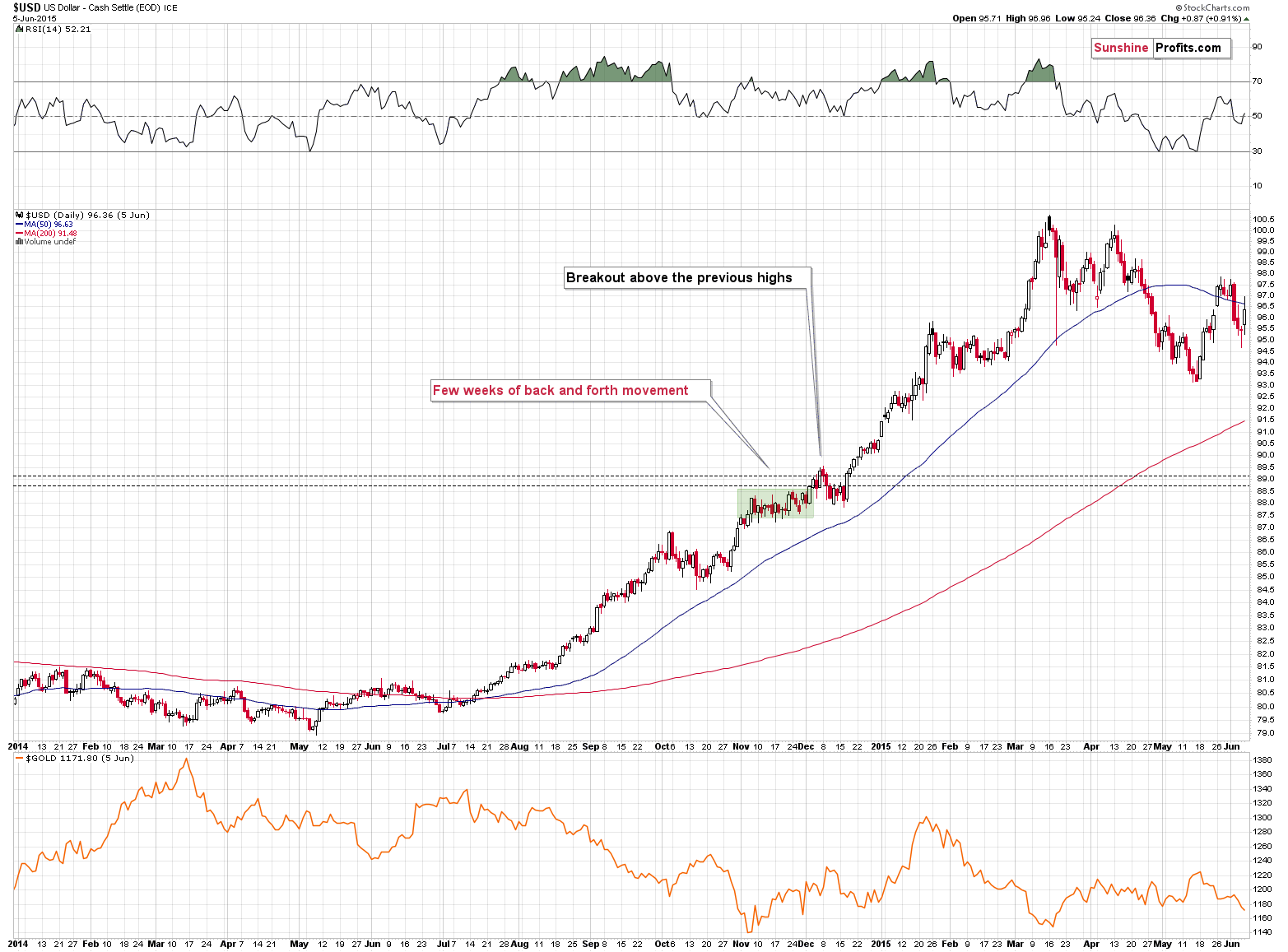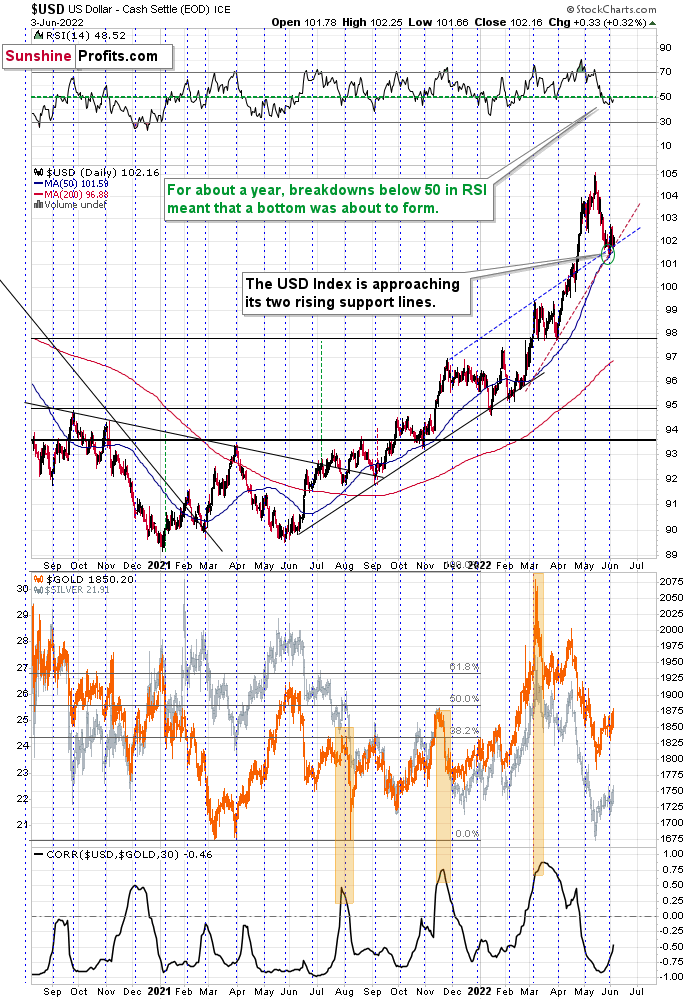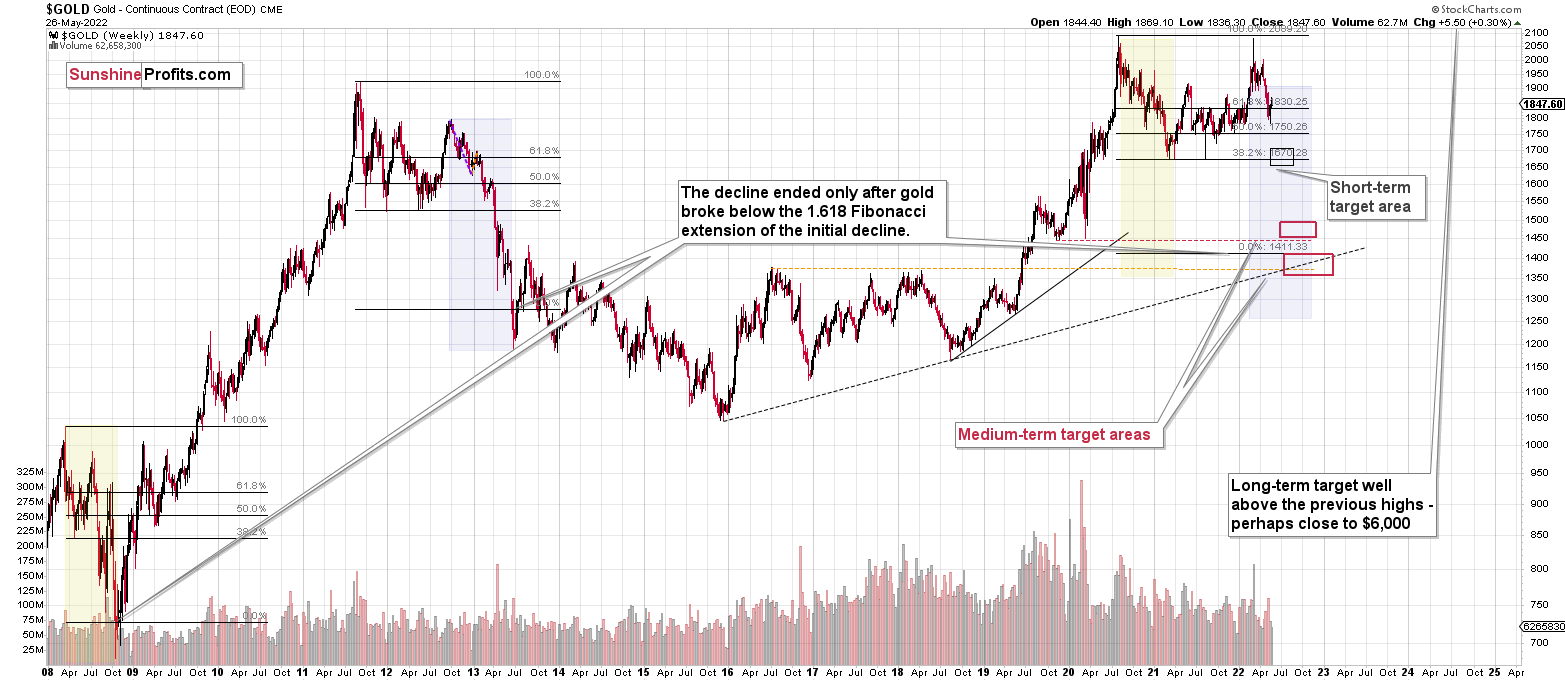Briefly: gold and the rest of the precious metals market are likely to decline in the next several weeks/months and then start another powerful rally. Gold’s strong bullish reversal/rally despite the USD Index’s continuous strength will likely be the signal confirming that the bottom is in.
Welcome to this week's flagship Gold & Silver Trading Alert. Predicated on last week’s price moves, our most recently featured outlook remains the same as the price moves align with our expectations. On that account, there are parts of the previous analysis that didn’t change at all in the earlier days, which will be written in italics.
PLEASE NOTE:
Dear Subscribers,
Exceptionally, the Gold Investment Update was not published last Friday (June 3), so we provide you with a new article today. However, this is not a new rule, but only a result of the Author's availability, so expect future publications according to the regular schedule (the end of the week, June 10).
Enjoy reading!
Monika Pianowska, Editor
Let’s start today’s analysis with a recap of what recently happened on the fundamental front.
The Weekly Fundamental Roundup
Last week was about more false narratives, as perma-investors prayed for Fed officials to scale back their projected interest rate hikes. However, with the economic data remaining resilient, the post-GFC crowd is still struggling for answers. To explain, I wrote on Jun. 2:
The newest narrative is that a faltering U.S. labor market could provide dovish cover for the Fed. I added on May 24 that the permabull prayer looks like this:
Fundstrat founder, Tom Lee, said:
"Incoming data could show labor market weakening... and thus [the] job market could be cooling at a pace faster than implied by tighter financial conditions." Moreover, “layoffs are accelerating, hitting 7,700 so far in May....We expect this to soon go parabolic, based upon anecdotal comments we have heard.”
“[In contrast], S&P Global released its U.S. Composite PMI on May 24. For context, the data was collected from May 12-23 and includes responses from “around 800” manufacturing and service sector companies in the U.S. An excerpt stated they added employees “at the fastest pace for 13 months.”
Furthermore, with U.S. nonfarm payrolls outperforming expectations on Jun. 3, it was another example of how investors' sentiment contrasts with the fundamental realities. For context, the figure in the middle column was the economists' consensus estimate.
Please see below:
In addition, Challenger, Gray & Christmas released their job cuts report on Jun. 2. A headline read that layoffs “Explode in Tech, Fintech, Construction.” However, these pandemic beneficiaries outperformed due to unprecedented stimulus. Now, they’re reverting to the mean. As such, when the perma-investors cherry-pick data points, please remember what I wrote on May 24:
Macroeconomic data declining from all-time highs represents normalization, not a crisis. Moreover, what did investors think would happen when the Fed started hiking interest rates? Of course, economic momentum would moderate. However, with a huge gap between 8%+ annualized inflation and the Fed’s 2% goal, more rate hikes are needed to alleviate the pricing pressures.
To that point, Challenger, Gray & Christmas painted a much rosier portrait of the aggregate U.S. labor market. For example:
“U.S.-based employers announced 20,712 cuts in May, a 14.7% decrease from the 24,286 announced in April. It is 15.8% lower than the 24,586 cuts announced in May of 2021 (…).”
“So far this year, employers announced plans to cut 100,694 job cuts, down 48% from the 192,185 cuts announced through the same period in 2021. It is the lowest recorded January-May total since Challenger began tracking monthly job cut announcements in 1993*.”
Please see below:
Second:
“Employers in the United States announced 126,083 hiring plans in May, primarily on plans from Ace Hardware to hire 40,000 associates and 7-Eleven, which plans to hire 60,000. So far this year, Challenger has tracked 612,686 hiring announcements, up 39% from the 441,696 hiring plans announced through May of last year. It is the second-highest January-May hiring total since the firm began tracking hiring plans in 2006.”
As a result, with Challenger, Gray & Christmas’ data showing that January to May layoffs in the U.S. are at an all-time low, while January to May hiring plans are the second-highest on record, does it seem like the U.S. labor market is falling off a cliff?
Further supporting the thesis, the NFIB released its small business jobs report on Jun. 2. An excerpt read:
“The labor shortage continues to be a challenge for small businesses with 51% (seasonally adjusted) of owners reporting job openings they could not fill in the current period, up four points from April and matching the 48-year record high set in September. Twenty-three percent of owners reported labor quality was their top business problem, second to inflation. Twelve percent of owners cited labor costs as their top business problem.”
Please see below:
Likewise:
“67% of owners reported hiring or trying to hire in May, up eight points from April. Ninety-two percent of those owners hiring or trying to hire reported few or no qualified applicants for the positions they were trying to fill. Thirty-three percent of owners reported few qualified applicants for their open positions and 28% reported none.”
Please see below:
Moreover, what happens when labor demand increases and labor supply stagnates?
“A net 49% of owners reported raising compensation, up three points from April and one point below the 48-year record high set in January. A net 25% of owners plan to raise compensation in the next three months.”
Thus, while the perma-investors shun relevant data to promote their narratives, the reality is that the Fed needs to fire plenty of hawkish bullets to cool the U.S. labor market and, therefore, inflation.
Likewise, the red line above shows a decline in the percentage of small business owners that plan to increase wages. However, actual compensation changes decreased in the prior month and then increased in May. Therefore, while small business owners hope wage inflation cools, unfilled job openings and a lack of qualified applicants should keep labor costs uplifted until the Fed normalizes demand.
To that point, government data shows the U.S. labor force participation rate has leveled off. After showcasing momentum in late 2021/early 2022, the metric only increased from 62.2% in April to 62.3% in May. Therefore, Americans are in no rush to return to the labor force, and with demand for workers still materially elevated, the lack of supply is profoundly inflationary.
Please see below:
Finally, Apartment List released its National Rent Report on May 31. For context, the Shelter Consumer Price Index (CPI) accounts for more than 30% of the headline CPI’s movement. As such, rent inflation is material. The report revealed:
“After a brief seasonal dip to close out 2021, rents have been steadily rising throughout 2022, with the pace of growth increasing each month so far this year. Our national rent index increased by 1.2 percent month-over-month in May, the largest monthly increase of the year (...).”
“In December 2021, rents actually fell in 61 of the nation’s 100 largest cities, the only month last year in which more than half of these cities saw a decline. This month, however, rents were up in 96 of the nation’s 100 largest cities.”
Please see below:
Furthermore, the five-month year-over-year (YoY) percentage change in rent inflation has already surpassed the annual figures from 2018 and 2019. As a result, the Fed has a material problem on its hands, and tighter monetary policy should be the end result.
The bottom line? With inflation still raging and the U.S. labor market in a demand-driven upswing, the pressure remains on the Fed to hike interest rates. Moreover, while the post-GFC crowd awaits a dovish pivot, the recent data only strengthens the case for a more hawkish policy.
Furthermore, U.S. economic data needs to moderate for the Fed to cool inflation. Thus, while some investors cry “collapse” when a weak print hits the wire, the reality is that new all-time highs for everything are antithetical to the Fed’s 2% inflation goal.
In addition, with nearly 5.5 million more nonfarm job openings than Americans unemployed, the Fed needs to slash the spread by roughly four million to return to pre-pandemic levels. Moreover, even then, a figure of plus 1 to 1.5 million is abnormally high. Therefore, more pain should confront the S&P 500 and the PMs as the hawkish drama unfolds.
In conclusion, the PMs declined on Jun. 3, as ‘good news is bad news’ for financial assets. Moreover, with volatility poised to persist until inflation is under control, the pricing pressures should haunt the financial markets for the foreseeable future. Likewise, history shows that all bouts of unanchored inflation end in a recession. Therefore, plenty of downside should lie ahead.
What to Watch for This Week
With more U.S. economic data releases next week, the most important are as follows:
- Jun. 6: The Confidence Board’s Employment Trends Index (ETI)
With employment making up one-half of the Fed’s dual mandate, monitoring the U.S. labor market is paramount. Moreover, with the recent data coming in hot, it will be interesting to see if the ETI follows suit.
- June 10: Headline CPI
The CPI will dominate investors’ attention this week, as a slowdown would elicit hope for a dovish pivot. However, the latest survey data shows that little progress has been made. Moreover, the month-over-month (MoM) readings are more important than whether inflation peaks YoY.
All in all, economic data releases impact the PMs because they impact monetary policy. Moreover, if we continue to see higher employment and inflation, the Fed should keep its foot on the hawkish accelerator. If that occurs, the outcome is profoundly bearish for the PMs.
Technically Speaking
Let’s start today’s technical discussion with a quick check on copper prices.
Practically, everything that I wrote about it last week remains up-to-date:
Copper recently CLEARLY invalidated another attempt to move above its 2011 high. This is a very strong technical sign that copper (one of the most popular commodities) is heading lower in the medium term.
The interest rates are going up, just like they did before the 2008 slide. What did copper do before the 2008 slide? It failed to break above the previous (2006) high, and it was the failure of the second attempt to break higher that triggered the powerful decline. What happened then? Gold declined, but silver and mining stocks truly plunged. The GDXJ was not trading at the time, so we’ll have to use a different proxy to see what this part of the mining stock sector did.
However, the situation looks different from the short-term point of view.
Even if copper is about to slide profoundly (which seems likely), it’s still likely to rebound as it reached its previous lows. In the past, we have seen such rebounds from analogous levels. I marked those situations with red rectangles.
Since PMs quite often align their short-term price moves with copper, a short-term correction here would be quite likely.
The only thing I would like to add is that it could be the case that the corrective upswing is about to end or it could have already ended. The size of the recent quick run-up is similar to what we previously saw in analogous situations (as marked with rectangles).
In particular, in the most similar situation (when copper corrected from similar levels in 2011), copper corrected a bit more than 50% of the preceding decline before sliding, and the same happened recently. Consequently, what we saw recently is just a confirmation of the bearish analogy.
Now, let’s move back to the big picture.
I previously commented on the above chart in the following way:
The Toronto Stock Exchange Venture Index includes multiple junior mining stocks. It also includes other companies, but juniors are a large part of it, and they truly plunged in 2008.
In fact, they plunged in a major way after breaking below their medium-term support lines and after an initial corrective upswing. Guess what – this index is after a major medium-term breakdown and a short-term corrective upswing. It’s likely ready to fall – and to fall hard.
So, what’s likely to happen? We’re about to see a huge slide, even if we don’t see it within the next few days.
Indeed, we did see a slide in the index. It’s down over 13%, even though the week is not yet over. The medium-term outlook remains extremely bearish, even though the above chart doesn’t have any specific short-term indications.
The index corrected just like the PMs, but it didn’t change anything with regard to the medium term.
What has happened recently?
On May 20, I wrote the following:
Gold erased almost the entire war-tension-based rally, and it’s now correcting this decline.
The RSI based on gold’s daily price changes was close to 30, which is a classic short-term buy signal. Based on how much gold usually rallies after this signal, it seems that it hasn’t rallied enough so far.
I marked the smallest rallies that followed an analogous signal with blue, dashed lines, and I copied them to the current situation. They point to gold rising above $1,880 in the near future.
The recent intraday high was $1,878.60 – that’s definitely close enough to the above-mentioned target to mark a top, or at least to say that the analogy to the previous cases has already materialized. Consequently, it’s no longer likely that gold will continue to rally just for the sake of correcting the preceding decline as it fell too far too fast.
The RSI just moved above 50, and this could mark the end of the correction, just like it did a few times in early 2021. Moreover, please note that we saw a (tiny, but still) sell signal from the Stochastic indicator.
Before continuing with the analysis of the recent events – since the war-tension-based rally is over - I would like to quote what I wrote about war and gold’s “imminent” price rise at the end of February, when titles like “gold to $3000!” were common on various media sites.
Here's what I wrote on February 28, 2022, in the Gold & Silver Trading Alert entitled “Since There is a War, Gold Will Rise, Right? Wrong.”:
Let’s keep in mind that for gold to decline, the war doesn’t have to end, it doesn’t have to be won by either side. The only thing that matters with regard to it, is how big the uncertainty and concern are, and the peak uncertainty/concern might be today, as everything is new, and the situation is dramatically changing the geopolitical environment in Europe.
For comparison, remember COVID-19 cases and deaths in early 2020? That was just a tiny fraction of what we saw later. However, it was new and unknown. People were particularly scared then, and the markets moved particularly significantly then – not based on additional millions of cases and thousands of deaths next year.
Investing and trading are difficult. If it was easy, most people would be making money – and they’re not. Right now, it’s most difficult to ignore the urge to “run for cover” if you physically don’t have to. The markets move on rumor and sell the fact. This repeats over and over again in many (all?) markets, and we have direct analogies to similar situations in gold itself. And junior miners are likely to decline the most, also based on the massive declines that are likely to take place (in fact, it already started) in the stock markets.
That wasn’t the peak uncertainty - it peaked about a week later, but that’s not crucial. What is crucial is that the war is still taking place (months later), so it seems that one could say that the above proved correct.
Since junior miners just moved to new 2022 lows, it was also profitable not to chase the “emotional stampede”, but rather focus on the analogies to the previous situations from the past. Based on how the situation has developed in the markets so far, it seems that the clearest analogy is to how the gold market performed in 2001, based on the U.S.-Afghanistan war. I provided the chart in my Feb. 28, 2022, analysis, but here it is again:
The decline had been big and sharp, but please note when it ended. Gold formed an initial, and then final, short-term bottom, very close to the price levels at which the rally started before the outbreak of the war.
So, gold corrected, and then it did what it was likely to do based on the previous trends.
That’s exactly what we’re seeing right now. Gold has either completed its correction, or it’s still correcting. However, given the strength of the medium-term downtrend, I wouldn’t expect gold to rally much further or for this rally to take particularly long.
When gold is done correcting, it’s likely to return to its previous trend. This time, the medium-term trend is down.
The major takeaway from this situation is that when things get hot, it’s absolutely necessary to check what happened previously in similar situations before acting based on emotions.
Before looking at mining stocks, let’s take a look at gold from a broader point of view.
Let’s keep in mind that between 2020 and now, quite a lot happened, quite a lot of money was printed, and we saw a war breaking out in Europe. Yet, gold failed to rally to new highs.
In fact, it’s trading very close to its 2011 high, which tells you something about the strength of this market. It’s almost absent.
Truth be told, what we see in gold is quite in tune with what we saw after the 2011 top, and in particular, shortly after the 2012 top. The long-term gold price chart below provides details.
It seems that if it weren’t for the war in Europe, gold wouldn’t have been able to move above $2,000 and instead it would have topped close to its previous highs, which provided strong resistance.
The extraordinary thing about that is that that’s exactly what happened in 2012. Gold moved higher but only until it reached its previous highs, which happened in the second half of 2012.
This time the RSI was a bit higher, but it was close to 70, just like what we saw in 2012.
Yes, this time gold moved back to the previous high, but:
- This happened as a result of a geopolitical event (war in Europe) and geopolitically-driven rallies are generally unsustainable;
- When gold reached its previous highs, it also formed a profound weekly reversal, which formed on huge volume, and that’s very bearish.
So, the current medium-term outlook for gold is very bearish.
There are also very interesting short-term takeaways from the above chart.
If the 2012-2013 is currently being replayed (at least to a significant extent), then let’s not forget that this decline initially took the shape of a back-and-forth decline with lower lows and lower highs (but there were notable short-term rallies within the decline).
One of those counter-trend rallies took place when gold touched its 40- and 60-week moving averages (marked with blue and red) in late 2012. The RSI was trading at about 50 at that time, and that’s more or less when we saw the clear sell signal from the MACD indicator (lower part of the above chart).
Let’s see how this applies to the current situation.
Basically, we saw the same thing. Gold has corrected – just like it did in 2012. However, the correction didn’t last very long (it’s just a correction, after all).
Back then, it had ended a bit above the 40- and 60-week moving averages after the RSI moved back close to the 50 level (I mean the second rebound, not the first one). We’re seeing the same thing.
The difference now is that gold declined more in the short term before correcting, whereas back in 2012, it corrected twice. However, let’s not forget that this time the preceding rally was bigger (war tensions), so it’s no wonder that gold had more to correct in a shorter time. Consequently, it seems that the current correction is taking place “instead of” two 2012 corrections.
Anyway, after the correction was over, gold plunged, and the next rebound started once gold moved close to its previous medium-term lows. The analogous lows right now are the 2021 bottoms, which are below $1,700. That’s where I think gold is headed next.
Let’s take a look at the silver market.
Just like gold, silver hit my target area and then moved slightly below it. Then it rallied, but it could be the case that the rally is already over. In fact, it seems quite likely.
Silver didn’t correct significantly, somewhat in line with what we saw in early 2020. No wonder – the silver market is more correlated with the general stock market, and the latter hasn’t been the top performer recently (except for the very recent run-up).
Why would silver be more aligned with stocks than gold is? Because it has more industrial applications than gold. Therefore, the demand for the white metal is more aligned with how the economy is performing.
How low will silver slide now? Ultimately, I wouldn’t rule out a move to or below the 2020 low, but as far as the next short-term downswing is concerned, the $17 - $19 area becomes the likely target. Yes, it’s quite wide, but it really is unclear how silver will perform now.
The support provided by the 2020 highs and the 61.8% Fibonacci retracement based on the entire 2020-2021 rally is very strong. However, this support is not that much below the current price levels. And if gold and miners are about to more or less repeat their recent declines (and stocks decline too), then silver could also repeat its previous decline. In this case, it would be likely to fall below the above-mentioned support.
The next support is provided by the mid-June 2020 low (~$17).
On an immediate-term basis, please note that in today’s pre-market trading (at the moment of writing these words) gold is up by 0.19%, while silver is up by 1.68%, which means that silver is outperforming gold on an immediate-term basis, which we often see before declines.
Let’s not forget that gold is not the only precious metal that is repeating its 2012 performance right now, and you can see more details on silver’s long-term chart.
As you can see on the above chart, silver corrected about 50% of the previous downswing, and this correction ended at about $30, a long time ago. Ever since, silver has been declining, and even the outbreak of war in Europe didn’t make silver rally above that level.
On the above chart, you can see how silver first topped in 2011, then declined and formed another top at the cyclical turning point. Next, it declined once again – to the previous lows. After that, silver rallied (in 2012 and 2022), and it topped between its 50-week moving average (marked in blue) and the previous top. Now silver is declining in a back-and-forth manner (you can see it more clearly on the previous short-term silver chart).
Back in 2012, these were just the early days of a gargantuan decline, and the same appears likely to be the case this time. Interest rates are going up after all, and the Fed is determined to quench inflation.
Let’s not forget that rising interest rates are likely to negatively impact not just commodities, but practically all industries. This will likely cause silver’s price to decline profoundly, as silver’s industrial demand could be negatively impacted by lower economic growth (or a decline in economic activity).
Besides, please note that silver didn’t even manage to rally as much as copper (which tried to move to new highs recently) or most other commodities, thus being rather weak.
Consequently, it seems that silver will need to decline profoundly before it rallies (to new all-time highs) once again.
Having said that, let’s take a look at what happened in the junior mining stocks.
In Friday’s Gold & Silver Trading Alert, I commented on Thursday’s rally in the following way:
The price of the GDXJ ETF – a proxy for junior miners – moved sharply higher yesterday, and this got many people excited. High volume confirms that. It’s natural for most investors and traders to view rallies as bullish, but let’s keep in mind that most traders tend to lose money… It’s not that simple. After all, the best shorting opportunities are at the tops, which – by definition – can only be formed after a rally.
The particularly interesting thing about high volume readings in the GDXJ ETF is that they quite often mark local tops. Remember the late-April – early-May consolidation? It ended when GDXJ finally rallied on high volume. That was the perfect shorting opportunity, not a moment to panic and exit the short position.
The GDXJ-based RSI indicator is also quite informative right now. It moved well above 50, but it’s not at 70 yet. Why would that be important? Because that’s when many of the previous corrections ended.
When one digs deeper, things get even more interesting. You see, when we consider corrections that started after the RSI was very oversold (after forming a double bottom below 30), it turns out that in all those cases, the tops formed with the RSI between 50 and 70. I marked those situations with blue ellipses on the above chart.
So, while it’s easy to “follow the action,” it’s usually the case that remaining calm and analytical leads to bigger profits in the end.
Also, let’s use yesterday’s move as something useful. If this single-day move higher made you really uncomfortable and almost made you run for the hills, it might be a sign that the size of the position that you have is too big. It’s your capital and you can do with it what you wish, but if the above were the case, it might serve as food for thought.
The big trend (as well as the reasons for it) remains down, which means that the enormous profit potential remains intact.
Friday’s decline confirms the above. While GDXJ had closed above the upper border of the previous price gap on Thursday, it closed back below it on Friday, thus invalidating the small breakout. This is a bearish sign, especially in light of what I wrote above. The top might be already in.
Remember, the strong medium-term downtrend remains intact.
Also, let’s not forget about the forest while looking at individual trees. By that, I mean looking at how gold stocks perform relative to gold. That’s one of the major indications that the current situation is just like what we saw at the 2012 top.
I previously wrote the following:
Gold stocks (GDX, GDXJ, and HUI Index) have recently been quite strong relative to gold. OK, but is this necessarily bullish? It might be, until one considers the fact that we saw the same thing at the 2012 top! This changes everything, and it does so because the links between now and that top are almost everywhere: in gold, in silver, in gold stocks, and even in their ratios.
As it turns out, the gold stocks to gold ratio is behaving almost identically as it was behaving at the 2012 top in the precious metals sector.
In both cases, the ratio moved below the rising medium-term support line, then formed a double-bottom below the line, and invalidated the breakdown, which resulted in a counter-trend rally. The rally ended shortly after the ratio moved above its 200-day moving average (marked in red). That’s what happened recently. What happened next in 2012? The decline not only continued – it accelerated!
Consequently, the recent action in the ratio is not really bullish. In other words, the fact that gold stocks were recently (in the short run only) strong relative to gold doesn’t make the medium-term outlook for the precious metals sector bullish. However, it remains bearish.
Interestingly, the ratio itself moved to its declining resistance line (and it even moved slightly above it, but the move was too small to be viewed as reliable), indicating that the corrective upswing might already be over or almost over. We get the same indication from the RSI indicator. It’s not above 70, but in the case of most local tops, the RSI didn’t have to move above 70. It just moved to more or less the same levels – I marked it with a horizontal blue line.
The above is actually a confirmation of the analogy that is visible directly in all three key components of the precious metals sector: gold, silver, and mining stocks.
Indeed, the HUI to gold ratio moved lower recently, clearly invalidating the breakout above its declining resistance line – in line with my previous expectations.
The decline didn’t stop there. The ratio actually managed to decline below its rising support line, likely surprising those who didn’t see the analogy to 2012-2013 (but if you’ve been reading my analyses for some time – you did).
The implications are extremely bearish, as it appears that the 2012-2013 decline will now be repeated to a considerable extent. Still, given this similarity, it seems that we might see a short-term correction just like the one that we saw in the early part of the 2012 decline.
I already discussed the analogies to 2012-2013 in gold and silver, so let’s take a look at the analogy in the HUI Index – a proxy for gold stocks.
If you look at the areas marked with red circles (especially now, 2012/2013, and 2008), you’ll notice that they are very similar. These are the sizable short-term rallies that we saw after/in the final parts of the broad head-and-shoulders patterns.
The moves were quite sizable – the 2012 rally was even bigger than the current one, even though there was no war in Europe at that time.
Based on how broad the pattern is and the self-similarity present in gold, it seems that the analogy to what happened in 2012 is most important right now.
Looking at the moving averages, we see that the 50-week moving average (blue) and 200-week moving average (red) performed quite specifically in late 2012, and we see the same thing this year.
The distance between 50- and 200-week moving averages is currently narrowing, while the former is declining. Back in 2012, the top formed when the HUI rallied above its 50-week moving average, which just happened once again.
The RSI indicator (above the price chart), based on the HUI Index’s weekly chart, provides us with another confirmation of the analogy, and the same goes for the stochastic indicator (below the price chart). The former was just close to the 70 level – exactly what we saw at the 2012 top, and the latter was above 90 – again, something that we saw at the 2012 top.
As history tends to rhyme, gold stocks are likely to slide, similarly to how they declined in 2012 and 2013.
Still, if the general stock market slides, and that appears likely for the following weeks and months, then we might have a decline that’s actually similar to what happened in 2008. Back then, gold stocks declined profoundly, and they have done so very quickly.
Please note that the sharpness of the recent decline in miners was even bigger than the one that we saw in 2008!
The dashed lines that start from the recent prices are copy-paste versions of the previous declines that started from the final medium-term tops. If the decline is as sharp and as big as what we saw in 2008, gold stocks would be likely to decline sharply, approximately to their 2016 low. If the decline is more moderate, then they could decline “only” to 120-150 or so. Either way, the implications are very, very, very bearish for the following weeks.
Please note that while we saw a tiny buy signal from the stochastic indicator, given the analogy to 2008, this is not necessarily bullish. When we saw it back then, it only emphasized the existence of the correction that was already ending.
Let’s take a brief look at the stock market indices.
The technical picture in the case of world stocks remains extremely bearish, and my previous comments on it were just confirmed. Here’s what I’ve been writing about the above chart for quite a few weeks now:
World stocks have already begun their decline, and based on the analogy to the previous invalidations, the decline is not likely to be small. In fact, it’s likely to be huge.
For context, I explained the ominous implications on Nov. 30. I wrote:
Something truly epic is happening in this chart. Namely, world stocks tried to soar above their 2007 high, they managed to do so, and… they failed to hold the ground. Despite a few attempts, the breakout was invalidated. Given that there were a few attempts and that the previous high was the all-time high (so it doesn’t get more important than that), the invalidation is a truly critical development.
It's a strong sell signal for the medium - and quite possibly for the long term.
From our – precious metals investors’ and traders’ – point of view, this is also of critical importance. All previous important invalidations of breakouts in world stocks were followed by massive declines in mining stocks (represented by the XAU Index).
Two of the four similar cases are the 2008 and 2020 declines. In all cases, the declines were huge, and the only reason why they appear “moderate” in the lower part of the above chart is that it has a “linear” and not a “logarithmic” scale. You probably still remember how significant and painful (if you were long, that is) the decline at the beginning of 2020 was.
Now, all those invalidations triggered big declines in the mining stocks, and we have “the mother of all stock market invalidations” at the moment, so the implications are not only bearish, but extremely bearish.
World stocks have declined below their recent highs, and when something similar happened in 2008, it meant that both stocks and gold and silver mining stocks (lower part of the chart) were about to slide much further.
The medium-term implications for mining stocks are extremely bearish.
Let’s take a look at the U.S. stock market.
Stocks moved above the previously broken neck level of the head and shoulders pattern, but they stopped below the previous 2022 low. As they were unable to break above it, they verified the breakdown below it.
Additionally, please note that we recently saw a session where the S&P 500 declined on enormous volume. We saw something similar in mid-December 2021, which was before stocks started their major slide.
This means that the rally could be over at this very moment or about to end.
The implications for the precious metals market, especially for silver and mining stocks, are bearish.
From a broader point of view, let’s keep in mind what happened in the previous cases when stocks declined profoundly – in early 2020 and in 2008. Miners and silver declined in a truly epic manner, and yes, the same is likely to take place in the following months, as markets wake up to the reality, which is that the USD Index and real interest rates are going up.
Speaking of the USD Index, after invalidating the breakout below the multi-year head-and-shoulders pattern, the USDX was poised to soar, just like I’ve been expecting it to do for more than a year, and that’s exactly what it did.
The RSI is currently slightly below 70, but since the USDX is in a medium-term rally and is already after a visible correction, it can rally further. Please note that we saw the same thing in 2008 and 2014. I marked the corrections with blue rectangles.
Back in 2014, the USD Index invalidated the breakout above the previous major highs, but then it soared once again, ignoring the invalidation. Consequently, I’m not taking the recent invalidation at its face value.
On the short-term basis, you can see that the USD Index bottomed exactly at my target area, at the combination of two support lines and the 50-day moving average.
Additionally, please note that the USDX once again bottomed close to the turn of the month. There is a specific cyclicality in the USD Index – it quite often turns around close to the end of a given month, and I marked those reversals with dashed vertical lines. It just happened once again. And since the bottom appears to be in, the USD Index appears to be ready to rally once more.
However, even if the USD Index moves slightly lower here, it’s likely to rally significantly in the following weeks and months.
The opposite is likely to take place in the precious metals sector. Gold, silver, and mining stocks are likely to decline profoundly in the following months, even if they move slightly higher here.
Consequently, in my view, the risk-to-reward ratio strongly favors short positions in junior mining stocks at this time.
Naturally, as always, I’ll keep you – my subscribers – informed.
Overview of the Upcoming Part of the Decline
- It seems to me that the short-term rally in the precious metals market is either over or very close to being over. It’s so close to being over that I think it’s already a good idea to be shorting junior mining stocks.
- We’re likely to (if not immediately, then soon) see another big slide, perhaps close to the 2021 lows ($1,650 - $1,700).
- If we see a situation where miners slide in a meaningful and volatile way while silver doesn’t (it just declines moderately), I plan to – once again – switch from short positions in miners to short positions in silver. At this time, it’s too early to say at what price levels this could take place, and if we get this kind of opportunity at all – perhaps with gold close to $1,600.
- I plan to exit all remaining short positions once gold shows substantial strength relative to the USD Index while the latter is still rallying. This may be the case with gold close to $1,400. I expect silver to fall the hardest in the final part of the move. This moment (when gold performs very strongly against the rallying USD and miners are strong relative to gold after its substantial decline) is likely to be the best entry point for long-term investments, in my view. This can also happen with gold close to $1,400, but at the moment it’s too early to say with certainty.
- The above is based on the information available today, and it might change in the following days/weeks.
You will find my general overview of the outlook for gold on the chart below:
Please note that the above timing details are relatively broad and “for general overview only” – so that you know more or less what I think and how volatile I think the moves are likely to be – on an approximate basis. These time targets are not binding or clear enough for me to think that they should be used for purchasing options, warrants or similar instruments.
Summary
Summing up, it seems to me that the short-term rally in the precious metals market is either over or close to being over. In fact, it’s so close to being over that I think it’s already a good idea to be shorting junior mining stocks.
I previously wrote that the profits from the previous long position (congratulations once again) were likely to further enhance the profits on this huge decline, and that’s exactly what happened. The profit potential with regard to the upcoming gargantuan decline remains huge.
As investors are starting to wake up to reality, the precious metals sector (particularly junior mining stocks) is declining sharply. Here are the key aspects of the reality that market participants have ignored:
- rising real interest rates,
- rising USD Index values.
Both of the aforementioned are the two most important fundamental drivers of the gold price. Since neither the USD Index nor real interest rates are likely to stop rising anytime soon (especially now that inflation has become highly political), the gold price is likely to fall sooner or later. Given the analogy to 2012 in gold, silver, and mining stocks, “sooner” is the more likely outcome.
After the final sell-off (that takes gold to about $1,350-$1,500), I expect the precious metals to rally significantly. The final part of the decline might take as little as 1-5 weeks, so it's important to stay alert to any changes.
As always, we'll keep you – our subscribers – informed.
To summarize:
Short-term outlook for the precious metals sector (our opinion on the next 1-6 weeks): Bearish
Medium-term outlook for the precious metals sector (our opinion for the period between 1.5 and 6 months): Bearish initially, then possibly Bullish
Long-term outlook for the precious metals sector (our opinion for the period between 6 and 24 months from now): Bullish
Very long-term outlook for the precious metals sector (our opinion for the period starting 2 years from now): Bullish
As a reminder, Gold Investment Updates are posted approximately once per week. We are usually posting them on Friday, but we can’t promise that it will be the case each week.
Our preferred ways to invest in and to trade gold along with the reasoning can be found in the how to buy gold section. Additionally, our preferred ETFs and ETNs can be found in our Gold & Silver ETF Ranking.
Moreover, Gold & Silver Trading Alerts are posted before or on each trading day (we usually post them before the opening bell, but we don’t promise doing that each day). If there’s anything urgent, we will send you an additional small alert before posting the main one.
Thank you.
Przemyslaw Radomski, CFA
Founder, Editor-in-chief



